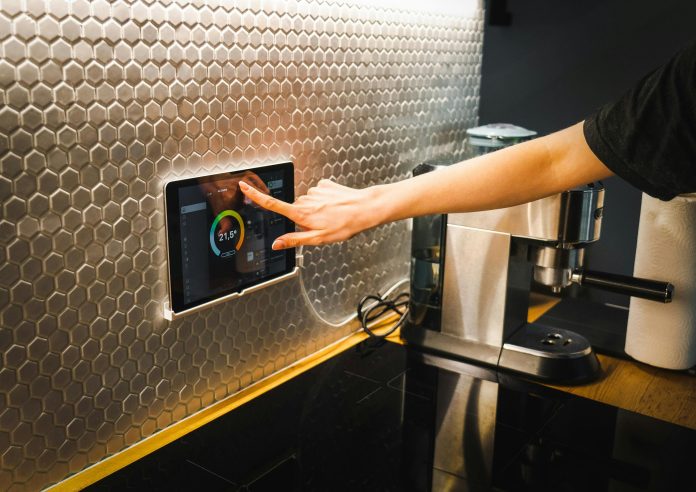Imagine your home quietly trimming your utility bills while chores happen in the background. That is the promise of a smart home done right. Below are the devices that deliver real savings and convenience, plus what to look for before you buy.
1) Smart Thermostats
Why they save: Independent studies of Nest users found average savings of about 12% on heating and 15% on cooling. That can pay back the device in roughly two years depending on energy prices. (Google Store)
Extra win: Many utilities offer demand response programs that nudge thermostats during peak events. Participants showed around 1 kW of load reduction per event, which helps the grid and can earn bill credits. (Sustainability)
What to look for:
- Learning or schedule automation
- Utility rebates and demand response compatibility
- ENERGY STAR listing for connected thermostats (ENERGY STAR)
2) LED Smart Lighting
Why they save: LEDs use up to 75 to 90 percent less energy than incandescent bulbs and last far longer. Pair them with motion sensors or schedules for additional savings. (The Department of Energy’s Energy.gov)
What to look for:
- ENERGY STAR LEDs
- Dimming and scheduling in the app
- Presence detection to auto switch off
3) Smart Power Strips and Plugs
Why they save: Many electronics draw standby power even when “off.” Advanced or smart power strips cut these vampire loads automatically, which trims wasted electricity. (The Department of Energy’s Energy.gov)
What to look for:
- Auto-off for peripherals when the TV or PC sleeps
- Energy monitoring to spot always-on devices
4) Robot Vacuums and Mop-Vacs
Why they save: Automated cleaning gives you hours back each month. Studies show a measurable reduction in time spent on cleaning when households adopt automatic vacuums, though the exact savings vary by home size and habits. (ScienceDirect)
What to look for:
- Mapping with room targeting
- Self-emptying docks and mop lifting
- Tangle-resistant brushes if you have pets
5) Smart Leak Detectors and Auto Shutoff Valves
Why they save: Water damage is one of the most common and costly home claims, often in the five-figure range. Leak sensors and whole-home shutoff systems can dramatically cut non-weather water losses and may qualify for insurance discounts. (III)
What to look for:
- Floor sensors for high-risk spots like water heaters and under sinks
- Whole-home flow monitors with auto shutoff
- App alerts plus local siren
Helpful buyer guide: A current roundup compares top detectors by features and use cases. (Tom’s Guide)
6) Smart Irrigation Controllers
Why they save: Weather-based controllers water only when plants need it and can save thousands of gallons per year for a typical home. The EPA’s WaterSense program cites large reductions in overwatering and specific annual savings estimates. (US EPA)
What to look for:
- WaterSense labeled controllers
- Local weather integration and seasonal adjust
- Flow sensor support to detect broken lines
7) ENERGY STAR Laundry Upgrades
Why they save: A modern front-load washer can use about 25 to 50 percent less energy and water than traditional top-loaders. Pair it with an efficient dryer to save even more over the product life. (ENERGY STAR)
What to look for:
- Front-load or high-efficiency top-load impeller
- Moisture sensors and low-heat cycles on dryers
- Cold-wash cycles plus smart start times to avoid peaks
8) Smart Home Hubs with Automations
Why they save: Centralized routines can stack small wins. A single “Away” scene can lower the thermostat, switch off lights and cut power to idle outlets. The biggest savings come from orchestrating several small automations across devices. (The Department of Energy’s Energy.gov)
What to look for:
- Reliable local automations
- Presence detection via phone or sensors
- Energy dashboards to see what is working
9) Induction or Smart Cooking Upgrades
Why they save: Induction heats cookware directly, which is more efficient than gas and typically more efficient than radiant electric. It also keeps kitchens cooler and adds safety features like auto shutoff. Portable units are an easy entry point. (Serious Eats)
What to look for:
- Power boost for fast boils
- Lockout and auto-off
- Compatible cookware with magnetic bases
10) Practical Setup Tips for Maximum ROI
- Start with the biggest loads. Heat and cooling, irrigation, then lighting and plugs.
- Use rebates. Many utilities subsidize smart thermostats, irrigation controllers, and efficient appliances. (Google Store)
- Automate based on presence. Lights and plugs should react to whether anyone is home.
- Monitor and iterate. Use device energy reports to kill waste you did not expect.
Bottom line
If you pick wisely, a handful of gadgets can pay for themselves while giving you time back every week. Start with a smart thermostat, LED lighting, and leak protection, then add irrigation control and smart automations. Your bills drop, your routines get easier, and your home quietly does more for you in the background.














